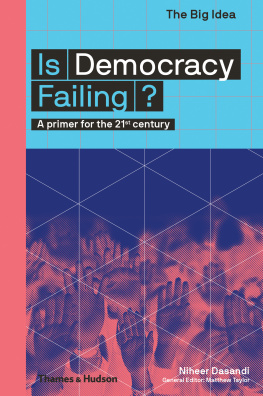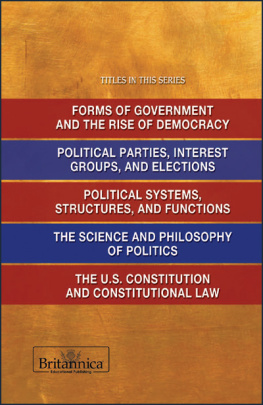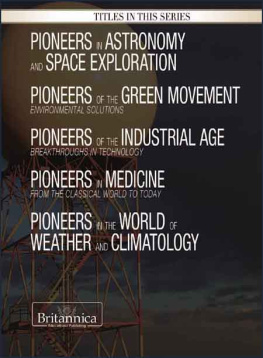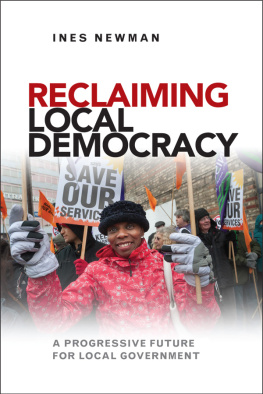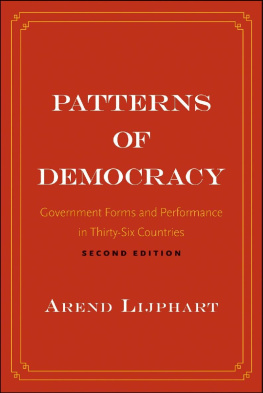FORMS OF GOVERNMENT AND THE RISE OF DEMOCRACY

GOVERNANCE: POWER, POLITICS, AND PARTICIPATION
FORMS OF GOVERNMENT AND THE RISE OF DEMOCRACY
EDITED BY BRAIN DUIGNAN, SENIOR EDITOR, RELIGION AND PHILOSOPHY

Published in 2013 by Britannica Educational Publishing
(a trademark of Encyclopdia Britannica, Inc.)
in association with Rosen Educational Services, LLC
29 East 21st Street, New York, NY 10010.
Copyright 2013 Encyclopdia Britannica, Inc. Britannica, Encyclopdia Britannica, and the Thistle logo are registered trademarks of Encyclopdia Britannica, Inc. All rights reserved.
Rosen Educational Services materials copyright 2013 Rosen Educational Services, LLC. All rights reserved.
Distributed exclusively by Rosen Educational Services.
For a listing of additional Britannica Educational Publishing titles, call toll free (800) 237-9932.
First Edition
Britannica Educational Publishing
J.E. Luebering: Senior Manager
Marilyn L. Barton: Senior Coordinator, Production Control
Steven Bosco: Director, Editorial Technologies
Lisa S. Braucher: Senior Producer and Data Editor
Yvette Charboneau: Senior Copy Editor
Kathy Nakamura: Manager, Media Acquisition
Brian Duignan, Senior Editor, Religion and Philosophy
Rosen Educational Services
Jeanne Nagle: Senior Editor
Nelson S: Art Director
Cindy Reiman: Photography Manager
Karen Huang: Photo Researcher
Brian Garvey: Designer, Cover Design
Introduction by Brian Duignan
Library of Congress Cataloging-in-Publication Data
Forms of government and the rise of democracy/edited by Brian Duignan.1st ed.
p. cm.(Governance: power, politics, and participation)
Includes bibliographical references and index.
ISBN 978-1-61530-733-3 (eBook)
1. State, The. 2. Political scienceHistory. 3. Comparative government. 4. Democracy. I. Duignan, Brian.
JC348.F67 2011
321dc23
2011045689
On the cover, pp. (top): The Signing of the Declaration of Independence, by John Trumbull. Library of Congress Prints and Photographs Division
On the cover, pp. : Columns making up the portico of the United States Supreme Court. www.istockphoto.com/Jeremy Edwards
On the cover, pp. (bottom): U.S. citizens participating in a rally on the National Mall in Washington, D.C. Rena Schild/Shutterstock.com
Contents

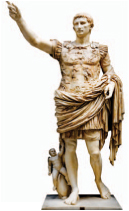
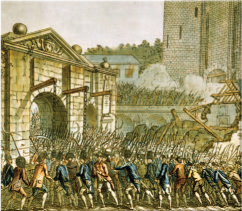


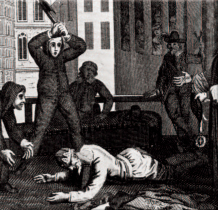


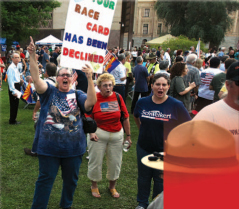

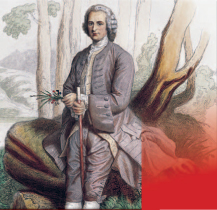

INTRODUCTION

Ancient Greek statesman Solon explaining his code of laws to the Athenians. Solons political reforms helped set the groundwork for modern democracy. Archive Photos/Getty Images
A s it is commonly used, the term government is ambiguous, having at least two distinct meanings. In one sense, it may refer to the political leadership of a country, region, state, city, or other political entitythat is, to the individuals or groups within the entity who hold executive power. In another sense, government may refer to the formal legal institutions, rules, and procedures through which the political leadership and other officials direct or perform the functions of governing, which often are established in a constitution.
Governments in this sense are sometimes called political systems, though this terminology technically has a broader meaning. A political system refers not only to formal elements of government, but also to various informal or unofficial structures and processes, together with the ways in which both formal and informal elements influence, and are influenced by, the political entitys economy, society, and culture.
In this book, which concerns the history of government and the rise of democracy in the West, the term government is used most often in the second sense of the term. This survey of the development of government from ancient times to the present will prove a rewarding resource for anyone interested in the history and future of democratic government.
As a political system, the government of the United States is constituted by three branchesthe executive, the legislative, and the judicial, each with its own constitutionally prescribed functions and powers. Each branch also exists on two levelsthe federal, or U.S., government and the state government, the latter of which possess all the powers not delegated to the United States by the Constitution, nor prohibited by it to the States, according to the Tenth Amendment (1791). A form of government, accordingly, is a way to classify individual governments by the various formal elements they have in common. Both the United States and the United Kingdom, for example, have democratic forms of government, because both have institutions and procedures for regularly electing the countrys political leadership. However, whereas the United States has a federal system, in which power is constitutionally divided between a central level of government and one or more lower levels, the United Kingdom has a unitary system, in which all power is held or delegated by the central level.
Governments first emerged in the ancient land of Sumer, between the Tigris and Euphrates rivers in what is now Iraq. The gradual development of agriculture on a large scale in Sumerian societies required an increasingly complex division of labor between various groups (e.g., farmers, engineers, warriors, priests, scribes, and tax collectors), many of which were characterized by the possession of specialized skills and knowledge. An elaborate division of labor in turn depended on an established system of political authority for organizing and directing the work of thousands of individuals at different levels. The governments of such societies were typically monarchical, being ruled by a single individual. Eventually, as their populations and territories grewand particularly as successful societies expanded by conquering othersthe monarchs ultimate authority would be exercised through numerous lower-level officials, who might be responsible for supervising certain governmental functions or ruling particular geographic areas within the monarchs realm. Monarchy was the form of government of many of the great civilizations of the ancient world, including that of Babylonia, China, Israel, Egypt, India, Persia, and imperial Rome. It continued to be the most common form of government in the West until approximately the late 18th century.
Next page







